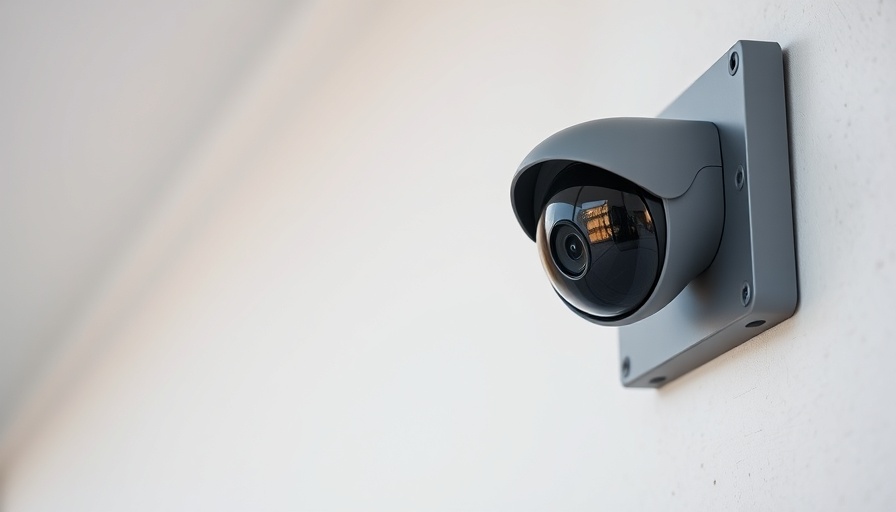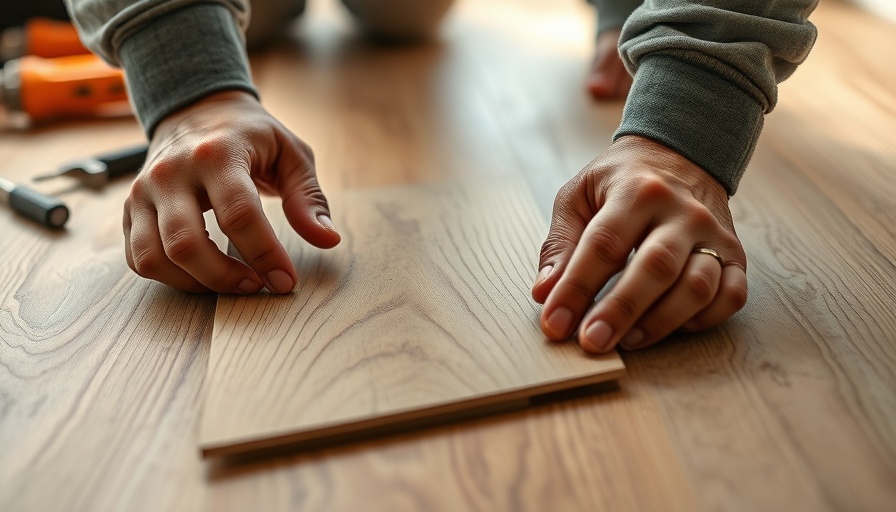
Why Security Camera Placement Matters
In an age where home security systems play a crucial role in protecting our spaces, understanding where to place security cameras effectively can make all the difference. Recently, a friend’s joyous dinner outing turned into a stressful saga of theft due to an ill-placed security camera, highlighting the importance of considering camera angles and fields of view. It's imperative to ensure that your cameras cover essential entry points and high-activity areas, enabling you to capture any suspicious behavior effortlessly.
Key Areas to Monitor for Optimal Security
The value of strategic camera placement cannot be understated. Experts advocate starting with key entry points, particularly doors and windows, which statistics show are the most common avenues for break-ins. Carolin Pfanne from Canary Home Security emphasizes that, "the main door and windows are the best places to start when planning your camera layout." Furthermore, including views of your property’s street or backyard areas can help deter burglaries and unsafe activities.
Avoiding Blind Spots: The #1 Rule
As the saying goes, out of sight, out of mind. Blind spots can easily become a home security vulnerability, opening crucial areas of your property up to undetected activity. Laura Finson from Brinks Home security reiterates this point, addressing the significance of ensuring that obstructions like vegetation or furniture do not hinder camera visibility. “Always assess your surroundings,” says Finson, backing the necessity of maintaining an unobstructed field of view.
Finding the Perfect Camera Height
What’s the ideal height for your cameras? Aiming for eight to ten feet high is typically best for capturing faces clearly while also deterring potential intruders. This height keeps cameras discreet enough to evade tampering while remaining accessible for maintenance. Former law enforcement officer Brian Townsend points out that this balance is vital, illustrating that proactive measures are essential to maintaining a secure environment.
Considering Environmental Factors
In the quest for optimal security camera placement, environmental factors come into play. Issues such as poor lighting can affect camera efficacy, resulting in blurred images during nighttime investigations. Townsend also highlights the importance of assessing your Wi-Fi signal strength, as remote cameras can experience connectivity disruptions if they are installed in a weak signal area. A Wi-Fi extender might become an invaluable tool in these situations, ensuring that your security system operates seamlessly.
Why Multiple Cameras Might Be Necessary
Though budgetary constraints may limit your options, it might be necessary to deploy several cameras to cover distinct angles. Investing in a few higher-quality cameras provides comprehensive coverage for critical areas, ensuring that blind spots are minimized and effective monitoring occurs continuously.
Personalized Solutions for Unique Homes
Each home carries its unique layout and potential vulnerabilities. Homeowners should customize their approach to security camera placement based on individual circumstances. Engaging with local professionals or home security specialists can uncover personalized strategies that bring peace of mind tailored to your household.
Practical Steps for Effective Security Arrangements
For homeowners looking to improve their security setups, actionable advice is essential. Conduct a walkthrough of your property and consider the discussed factors: identify entry points and blind spots, evaluate lighting conditions, and assess whether multiple cameras would enhance coverage. Utilizing resources from home improvement websites can clarify what types of cameras work best for your specific needs and provide installation tips.
Your Home Deserves Protection
In today's world, ensuring the safety of your home isn't just a luxury; it's a necessity. By following expert advice and considering these practical tips for security camera placement, you empower yourself to take control of your home’s safety. Setting up a solid surveillance system not only protects your property but also gives peace of mind to its occupants.
Call to Action: Take the first step in safeguarding your home today. Assess your current security setup and consider where additional cameras may be beneficial. Remember, a proactive approach straightforwardly leads to a secure lifestyle. Investing in proper camera placement is one of the best decisions you can make for your family’s safety.
 Add Row
Add Row  Add
Add 




Write A Comment